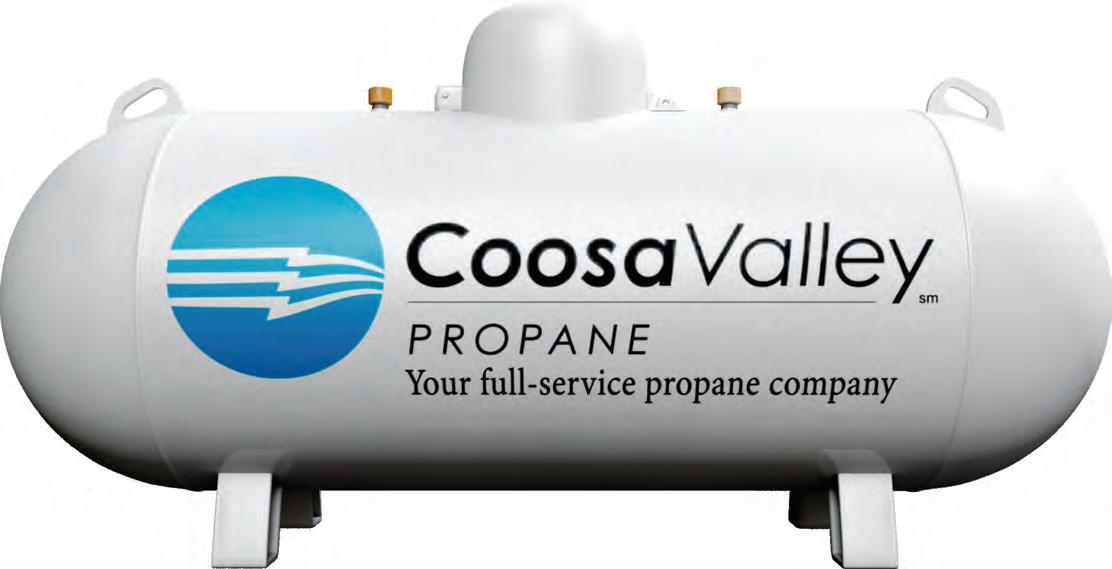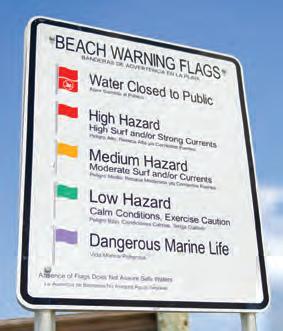
3 minute read
Lighting the Way CVT moves quickly in building broadband system
Think back to late 2020. Society was grappling with unprecedented challenges. Schools went digital, remote work became the norm, and a fast and reliable internet connection was no longer a luxury but a necessity.
In this time of change, Coosa Valley Technologies, a subsidiary of Coosa Valley Electric Cooperative, embarked on a mission. Its goal? To ensure access to ultrafast fiber internet for every CVEC member.
CVT’s plan was ambitious. Based on feasibility studies, experts expected the broadband buildout to take four years. The first fiber optic cable was hung in October 2020, beginning a tangible step toward the goal of community connectivity.

Outpacing projections
The first customer was connected in January 2022, a major milestone achieved as projected. But then, CVT started to outpace its own schedule. By February, teams were already connect- ing areas ahead of plan. By August, the entire Eastaboga area CVEC ser ves was online — a feat originally projected for the end of 2022. As autumn leaves started falling, most of Stockdale was connected, again ahead of the original timeline.
The progress doesn’t stop there. Late October saw the first Ohatchee area coming online, a considerable leap from the anticipated date of early 2023. By February, CVT’s network reached into Clay County as well.
Conquering challenges
This progress comes amid widespread labor and material shortages as broadband expansion initiatives across the country spur competition for resources. But guided by cooperative principles, CVT stays on course, demonstrating a commitment to community that transcends these hurdles.
Now, CVT stands on the cusp of completing the buildout, dedicated to wrapping up by the end of the year — ahead of the original four-year projection. Challenges could still slow the progress, but CVT remains committed to reaching everyone in CVEC’s membership as quickly as possible.
What once seemed like a distant future is now showing up in businesses, living rooms and home offices months ahead of initial projections. Born out of a societal need, guided by cooperative principles and steered by dedication to service, CVT is not just providing an essential service. It’s fostering connections one neighborhood at a time.
Beyond the buildout
Each day, CVT is closing the gap, drawing closer to reaching every corner of the community with ultrafast fiber internet ser- vice, unlocking a world of opportunities. By year’s end, families in even the most remote corners of CVT’s service territory will no longer have to wait for buffering videos or deal with slow downloads. Students will have seamless access to online learning resources, local businesses can thrive in the digital marketplace, and everyone can enjoy uninterrupted video calls.

Even when the buildout of CVT’s digital highway is complete, its story is far from over. The conclusion of the buildout is not the end, but rather a new chapter in CVT’s ongoing mission to serve and uplift its community. n
CVT’s broadband service map





Play it safe at the beach this summer
One of the highlights of a beach trip is water recreation. But the Alabama Law Enforcement Agency (ALEA) reminds everyone to be mindful of safety around water this season.
Never swim alone. Stay in groups, and don’t drift too far from shore.
• Don’t swim near piers, pilings and platforms.
• Do not swim in areas being used by fishermen. Avoid swimming in areas where schools of fish are present.
• Use extra caution when water is murky. Avoid being in the water during nighttime hours.
• Rip currents are most prevalent when the waves crash perpendicular to the beach, rather than at an angle. Look for gaps between the waves; a small patch of calm water surrounded by waves is often a rip current. And look for discolored water near the shore. Rip currents tend to drag large amounts of sediment back out to sea; they’re identifiable by a noticeable flow of sand extending away from the shore.
• Heed beach warning flags, which are posted at all public beach areas in Gulf Shores, Orange Beach and Gulf State Park. For more on summer safety, visit alea.gov.

Alabama launches statewide action plan to eliminate cervical cancer by 2033
Alabama ranks third in the nation in the incidence and deaths from cervical cancer, and the burden is even worse in rural counties. To address the problem, the state Department of Public Health, primary care providers and several other health and advocacy groups have launched “Operation Wipe Out Cervical Cancer Alabama.”

The action plan will use evidence-based strategies to promote vaccination against the human papillomavirus (HPV), encourage cervical cancer screenings, and ensure follow ups when a screening indicates abnormal results.
HPV vaccinations help protect children and adolescents before they are exposed to the virus. Cancer screenings among women ages 21 to 65 detect abnormal cells in the cervix, which can lead to cancer. And appropriate follow-ups improve the chance of recovery from cervical cancer.
For more information on the statewide action plan, and to find out how you or your organization may get involved, visit alabamapublichealth.gov
Take us along!

We’ve enjoyed seeing photos from our readers on their travels with Alabama Living! Please send us a photo of you with a copy of the magazine on your travels to: mytravels@alabamaliving. coop. Be sure to include your name, hometown and electric cooperative, and the location of your photo.We’ll draw a winner for the $25 prize each month.











